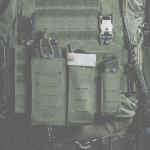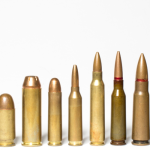
Menu






Since the beginning, humans have gone to battle. We’ve fought for land, food, religion, water, protection — even love. The need for protective shields and clothing quickly became apparent as threats against life increased. As battle has evolved, body armor has evolved right along side it.
The first instances of protective clothing and shields came from the use of animal skins by prehistoric humans. We now know that this idea was quite intelligent — to this day, some of the toughest armor in the world is derived from nature. Humans have been trying to mimic the shape, texture, durability and strength of animal hides, shells, scales and quills for years. From sea creatures like mollusks to prehistoric reptiles with thick, armor-like skin, mother nature has proven herself to be an armor force to be reckoned with.
In order to more easily produce protection, armor solutions evolved from animal skins to wooden shields. Metal was not too far behind. Metal’s claim to fame came with the notorious ‘suit of armor’ that the knights of the Middle Ages wore. However, the protective clothing and shield game was changed forever prior to the Middle Ages with the invention of gunpowder by the Chinese in the ninth century.
The invention of gun powder led to the first firearms, which historians refer to as Chinese Fire Lances (essentially the first prototype of a gun). That being said, firearms were not proliferated until gun powder made its way to the West, which led to the development of the musket in the 16th century. From that point forward, firearms had become more advanced — and more deadly — than ever. This rendered the majority of the traditional protective solutions ineffective.
The first recorded use of soft body armor was by the medieval Japanese who manufactured armor from silk. It wasn’t until the nineteenth century that the first use of body armor was recorded in the United States. The cost of silk plus the armor’s inability to protect against ammunition traveling at velocities greater than 600 fps led to the early bullet-resistant vest and garments found in the early twentieth century.
World War II demanded the next generation of ballistic vests with the invention of the Flak Jacket, comprised of ballistic nylon. While this form of protective armor provided security from fragmentation, the Flak Jacket did not stop rounds from most hand gun and rifle threats — not to mention its weight and bulk.
In 1960, the National Institute of Justice (NIJ) initiated a research program to initiate the development of lightweight body armor that law officers could wear. During the research and development stages, new fibers were woven into a lightweight fabric that possessed outstanding ballistic resistant capabilities. The work of the National Institution of Justice made today’s modern generation of concealable body armor a reality. It was then that the NIJ began to set performance standards defining ballistic resistant requirements for body armor worn by law enforcement.
Then, in 1965, DuPont chemist Stephanie Kwolek invented Kevlar — a ballistic resistant fiber that was originally intended to replace steel belting in vehicle tires. Her invention ushered in the modern era of ballistic resistant armor and is credited for saving thousands of lives. Many other fibers have since been invented to stop various threats, but Kevlar remains among the top performers for body armor today.
Today, we know that the variety of weapons and ballistic threat levels evolve drastically as time continues to pass — no technology today is guaranteed impervious to tomorrow’s threats. This walk through history inspires us to continue to innovate and push the boundaries of ballistic technology in order to provide revolutionary protection for our heroes. For by understanding the past, can we more strategically project the future requirements of armor.
Until Next Time,
Angel Armor
—
Sources:
Drop us a line, and we will get back to your promptly!
Drop us a line and we will get back to you promptly!